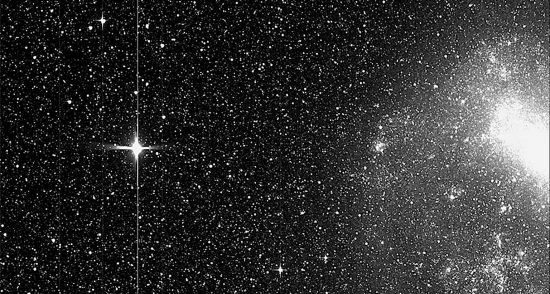
November 10, 2020
Are there thousands of exoplanets?
Exoplanets are thought to be in orbit around various stars in the Milky Way. In the past, it was impossible to see them, because starlight is so bright that it obscures dim, reflecting bodies like planets. Twenty years ago, astronomer Geoff Marcy, who was one of the earliest pioneers in the search for extra-solar planets, came up with an idea that he thought could resolve that issue: use Doppler shift to analyze the gravitational pull that a planet exerts as it revolves around a star.
Stars with planets should “wobble” slightly as those planets move around them. Doppler shift was used in the past to identify binary stars, so he attempted to use that method to identify less massive, planetary objects.
However, even large gas giant planets are thought to exert a force of only a few meters per second on stars. It is not surprising that the first putative planets found with the frequency-shift method are more than 300 times larger than Earth, in orbits closer than Mercury is to the Sun. This is because spectrographic analysis was less accurate than it is today.
A previous Picture of the Day discussed the Kepler Space Telescope. Launched on March 7, 2009 Kepler was equipped with an onboard photometer that could measure the reduction in starlight when an object passed in front of its subject stars. Kepler was able to simultaneously scan 150,000 stars within its field of view, “confirming” 989 exoplanets, until its planet-hunting ability ceased in May 2013.
The High Accuracy Radial Velocity Planetary Searcher (HARPS) can resolve stellar Doppler shifts in red dwarf stars that are as little as 3.5 kilometers per hour. Since red dwarfs are thought to be the most common type of star, with hundreds of them within 40 light years of Earth, for example, astronomers estimate that there might be billions of rocky planets in the Galaxy.
According to a recent press release, using NASA’s Transiting Exoplanet Survey Satellite (TESS), astronomers discovered what they think is a young planet around an “adolescent” star. This is important to them, because they are not able to observe changes in real time. So, as theory suggests, they take “snapshots” of stars at various stages of their evolution, in order to determine how their planetary companions age and grow.
Since detecting planets depends on Doppler shift, regardless of technique, what if that phenomenon is not due to the pull of an external body? Changes in radial velocity are said to exist because a star’s light is blueshifted or redshifted, depending on whether it is moving toward the spectroscope or away from it. What if the changes are from some other attribute of stars, like variability?
In an Electric Universe, a star’s photosphere is, in reality, a “glow discharge”, whose spectrum indicates its elemental composition. Therefore, a star’s diameter is not dependent on a solid body measurement: its photospheric “surface” exists well above any “real” exterior veneer. Surrounding the Sun (and other stars, presumably) is a plasma sheath that forms a boundary between the electrical condition of the Sun and the electrical environment of the Milky Way. This sheath is known as a double layer, forming the heliosphere that protects the Solar System from the oppositely charged Interstellar Medium. One major characteristic of double layers is that they oscillate.
The Sun is known to be a variable star, fluctuating in output with changes in its solar cycle. That cycle lasts, on average, 22 years. What if cycles in other star systems are more rapid and more violent? It is a principle tenet of Electric Universe theory that stars are not gravitationally compressed spheres of hydrogen and helium, but are electromagnetic “pinches” in cosmic Birkeland currents.
Depending on their locations in the Galaxy, stars might experience more powerful and more rapid changes in the electric power that feeds them, causing their plasma sheaths to expand and contract. Those oscillations could be what astronomers are seeing, and not differences in brightness from the gravitational pull of orbiting planets.
Stephen Smith
The Thunderbolts Picture of the Day is provided through the generous support of the Mainwaring Archive Foundation.












